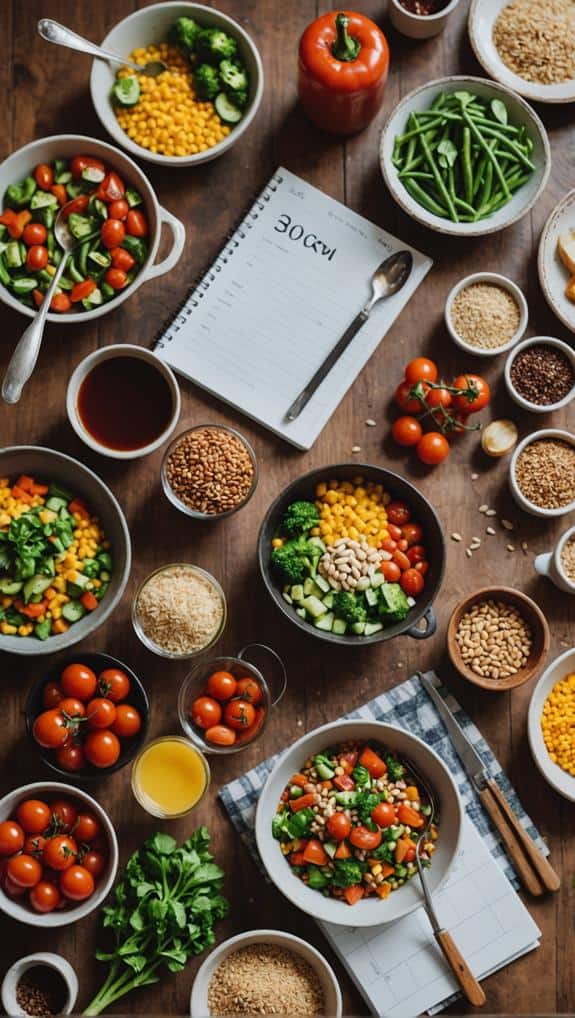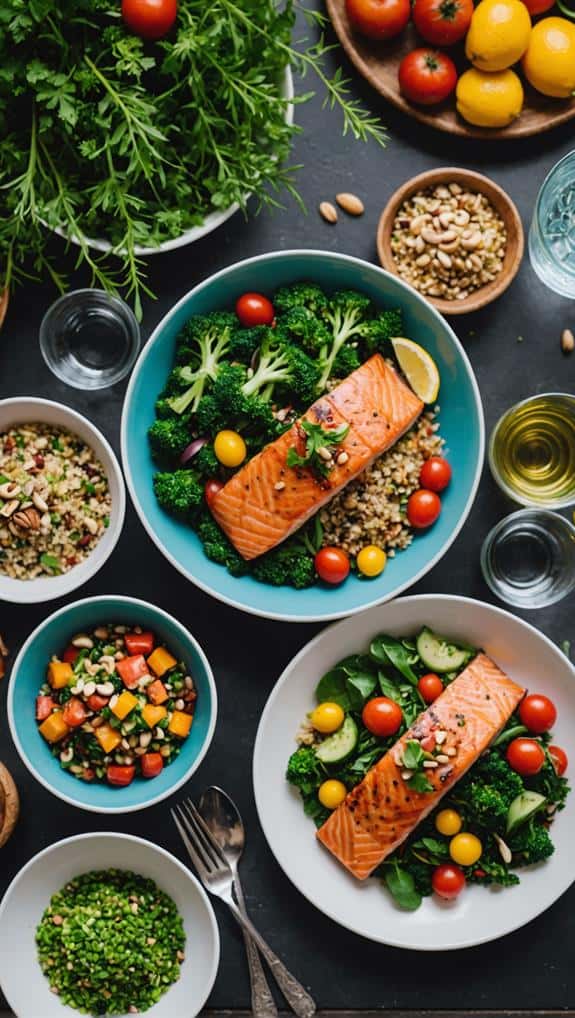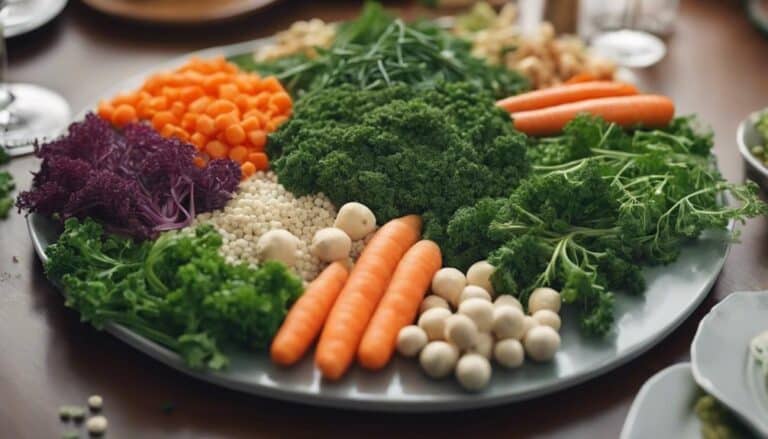You might think that dietary needs for seniors are just like anyone else's, but they actually require special attention to support their health and well-being. As people age, their nutritional requirements shift, impacting everything from energy levels to disease prevention. Understanding these unique needs is essential, yet many overlook the importance of tailored meal planning and nutrient-rich choices. There's more to this topic than meets the eye, and exploring effective strategies can greatly enhance quality of life for older adults. What specific dietary factors should you consider?
Contents
Understanding Senior Nutritional Needs

As you age, understanding your nutritional needs becomes increasingly important for maintaining your health and preventing chronic diseases. Older adults require a diverse diet that includes a variety of foods from all food groups. This approach helps reduce the risk of conditions like hypertension and diabetes. It is essential for seniors and their dietary needs to be addressed with care, focusing on nutrient-dense foods that provide adequate vitamins and minerals. Incorporating healthy sources of protein, whole grains, fruits, and vegetables can support overall well-being and energy levels. Additionally, staying hydrated and being mindful of portion sizes are crucial components of a balanced diet for older adults.
Prioritizing nutrient-dense foods is essential; focus on sources of protein to maintain muscle mass while minimizing added sugars, saturated fats, and sodium.
Key nutrients, including calcium, vitamin D, potassium, dietary fiber, and especially vitamin B12, should be at the forefront of your meal planning. Vitamin B12 absorption decreases with age, making it important to include fortified foods or supplements in your diet.
Additionally, staying hydrated is crucial. You should aim to drink water, low-fat milk, or fortified beverages rather than sugary drinks to prevent dehydration.
As caloric needs decrease with age, it's critical to guarantee that your diet remains rich in nutrients. By understanding and addressing these nutritional needs, you can enhance your well-being and effectively manage chronic diseases.
Embracing a healthy dietary pattern will empower you to live a healthier, more fulfilling life.
Dietary Guidelines for Older Adults
Understanding the specific dietary guidelines for older adults can markedly contribute to your overall health and well-being. To meet the dietary requirements of seniors, focus on incorporating a variety of food into your daily meals.
Aim for 1½ to 2½ cups of fruits and 2 to 3½ cups of vegetables, guaranteeing you get essential vitamins and minerals for best nutrition.
Whole grains should be a priority, with recommendations suggesting 5 to 10 ounces daily to provide necessary fiber for digestive health.
Don't forget about protein intake; aim for 5 to 7 ounces from sources like seafood, dairy, legumes, and nuts to help maintain muscle mass and physical function.
Additionally, consuming 3 cups of fat-free or low-fat dairy each day will enhance your calcium and vitamin D levels, which are crucial for bone health.
As you plan meals, remember to limit added sugars and saturated fats, promoting healthier eating habits that benefit heart health and reduce chronic disease risk.
Meal Planning Strategies

When planning meals, it's essential to create customized options that meet your nutritional needs while focusing on nutrient-dense foods.
This approach not only supports your health but also simplifies meal preparation, helping you manage time effectively.
Customized Meal Plans
How can you assure that your meals not only meet your dietary needs but also delight your palate? Customized meal plans are the answer. For seniors, these plans should prioritize nutrient-dense foods, incorporating a variety of fruits, vegetables, whole grains, lean proteins, and low-fat dairy. Following the Dietary Guidelines for Americans guarantees you're meeting essential nutrient needs.
Incorporating high-protein foods like seafood, legumes, or dairy can help maintain muscle mass, vital in preventing sarcopenia and enhancing physical health.
Your meal programs should also consider individual dietary restrictions and preferences. This means allowing for ingredient substitutions, such as gluten-free grains or reduced-sodium options, to accommodate conditions like hypertension or diabetes.
Advance meal planning encourages a diverse diet and simplifies grocery shopping, helping you stay within budget while utilizing SNAP-friendly recipes that promote healthy eating.
Always consult with a health care provider or registered dietitian when creating personalized meal plans. They can assure your meals align with individual health goals, nutritional needs, and any medical conditions you may have, making your dining experience both satisfying and beneficial.
Nutrient-Dense Food Choices
Customized meal plans set the foundation for making informed food choices that prioritize your health while satisfying your taste buds. Focus on incorporating nutrient-dense foods into your daily meals. Aim for 1½ to 2½ cups of fruits and 2 to 3½ cups of vegetables, which are essential for providing crucial nutrients and reducing the risk of chronic diseases in seniors.
Whole grains should form 5 to 10 ounces of your daily intake, promoting digestive health and sustained energy levels.
Don't forget to include protein-rich foods like seafood, dairy, legumes, and nuts, meeting the recommended intake of 5 to 7 ounces daily to maintain muscle mass and overall health.
Dairy products or fortified alternatives should account for 3 cups per day, as they provide important calcium and vitamin D necessary for bone health, especially as we age.
During meal planning, aim to minimize added sugars, saturated fats, and sodium intake, which can enhance diet quality and support your nutritional needs.
Convenient Meal Preparation
Effective meal preparation is vital for seniors looking to maintain a balanced diet while managing their time and energy levels. By engaging in advance meal planning, you can simplify your choices and guarantee you're meeting your unique dietary needs. This approach not only allows you to include a variety of foods but also helps maintain a nutritious meal regimen, critical for older individuals.
Start by creating a shopping list based on your planned meals. This can help manage your budget effectively and guarantee you're utilizing SNAP-friendly recipes. When selecting meals, consider both the preparation time and the complexity of the recipes. Aim for a balance between quicker options and more involved dishes to suit varying energy levels and cooking abilities.
Don't forget about food safety; guarantee proper storage and handling of ingredients. It's also wise to monitor your calorie intake in accordance with your health goals. Always consult health professionals when making dietary changes to align with your specific nutritional needs.
Resources like the USDA's MyPlate Kitchen can provide tailored recipes to help you incorporate vital fruits, vegetables, and whole grains into your meal planning.
Recipe Resources for Seniors
Finding the right recipe resources can make a big difference in your cooking experience.
Accessible platforms offer a wealth of nutrient-dense meal ideas that cater to your specific dietary needs, while customizable techniques help you prepare dishes that suit your preferences.
Accessible Recipe Platforms
Many seniors face unique dietary challenges, but accessible recipe platforms can make meal preparation easier and more enjoyable. These platforms, like the USDA's MyPlate Kitchen, offer healthy recipes specifically tailored to seniors' nutritional needs. By promoting balanced meals rich in essential nutrients, they help guarantee that you or your loved ones can maintain a healthy diet.
Online recipe databases allow seniors to filter recipes according to dietary restrictions such as low-sodium or gluten-free options. This feature is important in finding suitable meals that meet specific health requirements.
Additionally, interactive platforms, like Amazon Alexa and mobile apps, provide easy access to MyPlate nutrition tips and recipe ideas right at home.
Community organizations also play an important role, offering workshops and classes that equip seniors with the skills to prepare nutritious meals. These resources often include modified recipes that cater to texture preferences and cooking techniques, enhancing the overall meal preparation experience.
Nutrient-Dense Meal Ideas
When it comes to meal planning for seniors, incorporating nutrient-dense options can really make a difference in their overall health and well-being.
Utilizing resources like the USDA's MyPlate Kitchen provides you with a wealth of meal ideas specifically tailored to meet seniors' unique dietary needs.
Focus on including protein-rich foods such as beans, lentils, and fortified soy alternatives in your recipes to help maintain muscle mass, which is essential for healthy aging.
Try easy-to-make recipes like "20-Minute Chicken Creole" or "Five A Day Salad," which offer a balanced variety of vegetables and proteins.
These meals not only promote nutrient intake but also save time in the kitchen.
For added convenience, consider using pre-cut fresh fruits and ready-to-eat vegetables, making meal prep simpler for those with limited cooking abilities.
Customizable Cooking Techniques
For seniors looking to enhance their cooking skills, customizable techniques can transform meal preparation into an enjoyable and fulfilling experience. By utilizing resources like the USDA's MyPlate Kitchen, you can find healthy recipes tailored to your nutritional needs.
Here are three key strategies to simplify your cooking:
- Incorporate Ready-Made Ingredients: Using pre-cut vegetables and canned seafood can save time and effort, allowing you to create balanced meals rich in protein and fiber.
- Tailor Recipes: Adjust recipes to include low-sodium and low-sugar substitutes. This not only helps maintain your health but also guarantees you enjoy flavorful dishes.
- Plan Your Meals: Engage in meal planning by creating shopping lists based on selected recipes. This approach helps manage dietary restrictions and guarantees you have the necessary ingredients on hand.
These customizable cooking techniques enable you to prepare meals that aren't only simple but also nutritious.
Sample Menus for Healthy Eating

Creating balanced sample menus for healthy eating is important for seniors to meet their unique nutritional needs. You can structure meals to include 1½ to 2½ cups of fruits and 2 to 3½ cups of vegetables daily. These foods provide essential nutrients that support overall health. Aim for 5 to 10 ounces of whole grains to guarantee a well-rounded diet.
Incorporating protein-rich foods is significant. Include options like seafood, dairy, legumes, and nuts to help maintain muscle mass, targeting 5 to 7 ounces of protein each day. For dairy, consider at least 3 cups of low-fat or fat-free options, which enhance calcium and vitamin D intake.
Don't forget to add variety to meals! This not only makes eating enjoyable but also helps meet dietary guidelines, allowing seniors to explore different flavors while adhering to restrictions like low sodium and added sugars.
Lastly, include easy-to-make, nutrient-dense snacks, such as sliced fruits and pre-cut vegetables, to support overall meal planning and contribute to the recommended daily intake of key vitamins and minerals.
Importance of Hydration
Maintaining a nutritious diet is only part of the equation for seniors; hydration plays an essential role in overall health as well. Older adults often have decreased thirst perception, which can elevate their risk of dehydration. It's vital to encourage regular fluid intake, even if they don't feel thirsty.
Here are some key points to remember about hydration for older adults:
- Water is Best: Water should be the primary beverage as it helps maintain bodily functions without unnecessary calories or sugars. Unsweetened fruit juices and low-fat milk can also provide valuable nutrients.
- Daily Fluid Intake: Aim for at least 8 cups (64 ounces) of fluids daily, adjusting based on individual health conditions and activity levels.
- Alcohol in Moderation: If consuming alcohol, stick to no more than 2 drinks per day for men and 1 for women. Alcohol affects older adults more quickly, increasing the risk of dehydration and falls.
Be mindful that individuals with specific health conditions, such as renal disease or heart failure, may need tailored hydration guidance from healthcare providers.
Prioritizing hydration helps maintain health and well-being in older adults.
Supporting Seniors' Dietary Choices

Supporting seniors' dietary choices means ensuring they've access to a variety of nutrient-rich foods that cater to their unique needs. Focus on providing fruits, vegetables, whole grains, lean proteins, and low-fat dairy to help meet their nutritional needs.
Healthy dietary habits can be encouraged through meal planning that takes into account individual restrictions and preferences, making meals both appealing and nutritious.
Engaging seniors in shared meals can enhance their enjoyment and foster community connections, promoting healthier food choices. Community resources like Meals on Wheels are invaluable, delivering tailored meals to homebound seniors and addressing potential food insecurity.
Regular consultation with healthcare professionals, such as registered dietitians, can also provide personalized dietary guidance.
This support is critical in helping seniors manage chronic conditions while ensuring they meet their unique dietary needs.
Final Thoughts
As you navigate the dietary needs of seniors, remember that every meal can be a step toward better health and well-being. Imagine the joy of seeing them thrive, their energy renewed with every bite. By embracing tailored meal planning and focusing on nutrient-rich foods, you're not just feeding their bodies; you're nourishing their spirits. What if the key to enhancing their quality of life lies in your hands? Together, you can create a vibrant, supportive nutritional journey.






